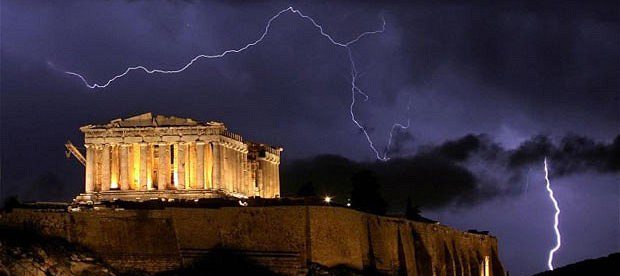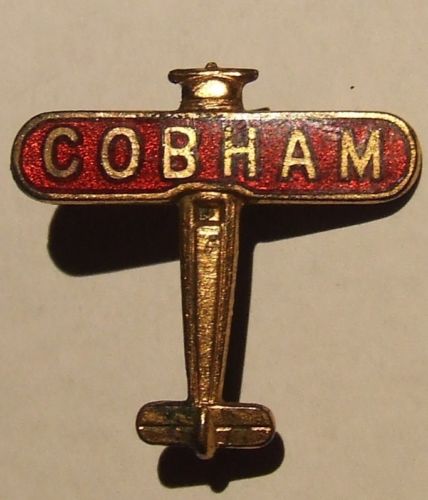Sir Alan Cobham’s Flying Circus ~ 1932-35
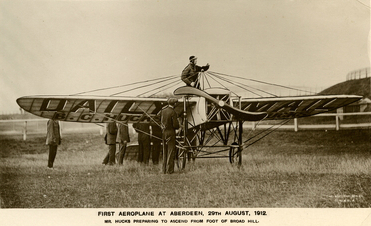
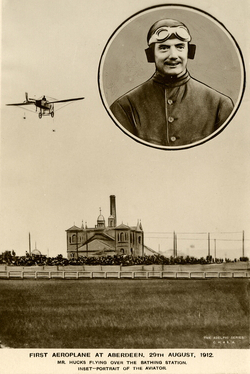
An Adelphi Series Postcard showing Pilot Bentfield Charles Hucks (25 October 1884 – 7th November 1918) preparing the 1st Flight of an Aeroplane over Aberdeen on 29th August 1912. The Postcard states that he would ascend from the foot of the Broad Hill at Aberdeen Beach. Hucks was a member of the Royal Aero Club and his Exhibition was sponsored by the Daily Mail Newspaper, as indicated on the Plane’s Wings. Hucks brought his Plane to Aberdeen by Railway Train. On the 29th his Exhibition Flights at the Kings & Queens Links were initially delayed by bad weather. He subsequently made 2-Flights that day. The next day’s Aberdeen Journal reported “Aberdeen yesterday got its 1st glimpse of the marvels of Modern Aviation, when, in its 1,000s, it witnessed 2 remarkably successful Flights of 11 & 13-mins duration respectively”. Hucks was born at Stansted, Essex, and was the youngest son of a Consulting Engineer. He was a 1st-class Motorist, and it was only natural that to one of his temperament the new Science of Flight should have appealed strongly from the very first. He took his Royal Aero Club Flying Certificate on May 30th, on a Blackburn Monoplane at Filey, but he had been actively associated with Flying since 1910. He died of Influenza aged only 34 yrs. Inset – an Adelphi Series Postcard (heavily overpainted) showing Aviator B C Hucks Flying the 1st Aeroplane in Aberdeen over the Bathing Station at the Beach on 29th August 1912.

National Aviation Day was set up to let Aviation reach the General Public in Britain most of whom had never seen an Aircraft before. Based at Ford Aerodrome in Sussex, Alan Cobham assembled a fleet of different Aircraft ranging from the ‘Giant Airliner’ (a Handley Page W.10) to medium sized Avros to the small Gliders & Autogiros. Alan Cobham’s National Aviation Day, UK Display Tour. The 1932– 1935 No.1 Tours of the Sir Alan Cobham Enterprise who also performed at Aberdeen.
National Aviation Day has entailed an enormous amount of Organisation. Each day sees the entire Fleet of some 12-Aircraft with attendant Transport Operating at a different Town or Centre, and a Programme embracing over 20 Events is given twice a day. Included in this Programme are demonstrations of various types of aircraft, aerobatics, pylon racing, parachute descents, wireless inter-communication between Aeroplanes and the Ground & Flights with towed Sailplanes (Gliders).
Sir Alan Cobham reckoned that 75% of the Boys who wanted to get into the RAF in 1938 & 1939 said they did so because they paid 5/- or 10/- for a Flight at his ‘Flying Circus‘. Organising 100s of complex Displays all over the Country for 4-yrs must have been a Logistical nightmare, and it was not without its distressing Accidents, but – at least to some extent – the Nation became ‘Aviator or Aviatrix minded’ – This included young Girls who during WW2 went on to become Members of the Air Transport Auxiliary (ATA) between 1940 & 1945. The First 8 were Winifred Crossley, Margaret Fairweather, Rosemary Rees, Marion Wilberforce(Aberdeenshire), Margaret Cunnison, Gabrielle Patterson, Mona Friedlander & Joan Hughes. All were Flight Instructors, and the Group included both the youngest woman to obtain a Pilot’s License (Joan Hughes, at age 17) and the 1st Woman to be appointed a Flight Instructor (Gabrielle Patterson), as well as the 1st Woman to Fly a Spitfire (Margaret Fairweather). This Group of 8 represented the best Female Pilots of the time – 9, including their Commander, Pauline Gower an Pilot at the Flying Circuses. All were Stationed at Hatfield initially, Ferrying Light Training Aircraft. The initial Group of 8 expanded to 26 by the end of 1940, with famed Pilot Amy Johnson joining after some persuasion on Gower’s part, as well as Lettice Curtis.
Saturday 24th September 1932: Aberdeen – Making Britain Air-minded
Air Circus comes to Aberdeen. Aviation Day, Sir Alan Cobham‘s Fleet of 12-Aircraft. National Aviation Day will be held at Aberdeen on Saturday 24th September, when there will be given a Great Flying Demonstration, Sir Alan Cobham’s visit to Seaton is certain to be the rendezvous of 1,000’s of people from Aberdeen and the surrounding District to-day to witness the Display Exhibition by Sir Alan Cobham and his Air Circus. Press & Journal is offering for Free Flights with Sir Alan Cobham‘s National Aviation Day Display, which is coming to Seaton, on Saturday next. This will be the biggest Flying Demonstration ever seen in Aberdeen. Lady Aberdeen took a Joy-ride Flight with Sir Alan.
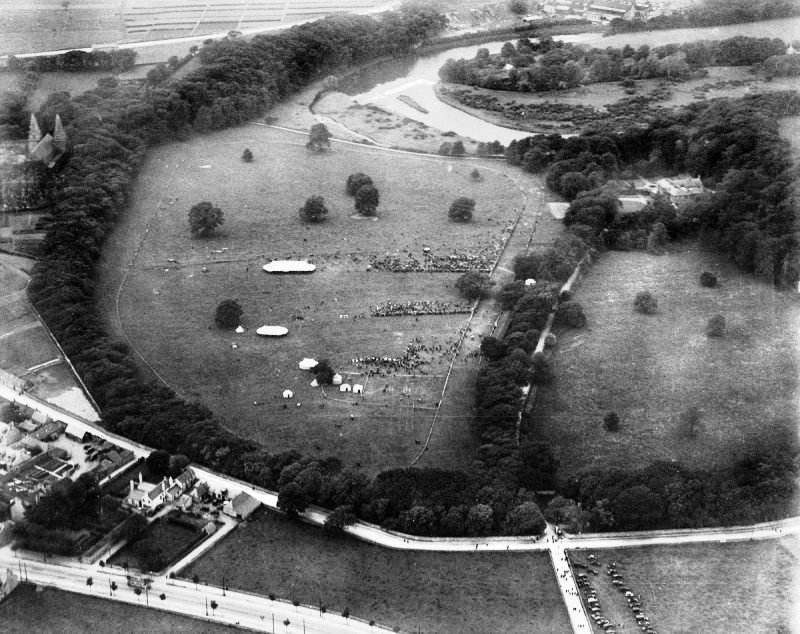
(Return) Visit at Aberdeen on Saturday & Sunday 15/16th July 1933. Thousands made to look up at Seaton. Aberdeen took to the Air yesterday and enjoyed it. As long as the light lasted there was the drone of Aeroplanes over the City and still Citizens came, old & young, to have Flights with Sir Alan Cobham’s Pilots. A novel vehicle designed to facilitate quick fuelling of Aircraft was seen action for the 1st time at Aberdeen when Sir Alan Cobham’s Air Circus pays its visit. Six Centres in the North-East had been selected by Sir Alan Cobham for Air Pageants in connection with his Crusade to keep Civil Aviation free from International Control. Then there was the refuelling Wagon with a Team of 2. In both 1935 this was a huge Leyland 6-wheel Tanker supplied by National Benzol. All Engines, Vehicle or Aircraft, as was frequently mentioned on the Loudspeakers, ran on National Benzol. Free, of course. Some of the Engines, the Jupiters & the Armstrong Siddeleys, had the carburettors jetted for 80/20 Petrol Benzol mix.
This “Barnstorming” Spectacle was part of Alan Cobham’s Aviation Display Day team. Cobham’s Team also used Tiger Moths, Gipsy Moths & Desoutters. This was a time when Flight was very much a novelty and still a Pioneering way of Travelling. At shows such as this Spectators were given the opportunity to take short Flights. One can imagine the sense of wonder as few people could afford to Fly. Commercial Aviation came to Aberdeen in the 1930s. For a short while the Seaton Site was used as an Aerodrome by E E Fresson. But it was Eric Gandar Dower not Fresson who successfully developed Dyce Airport. His Company’s 1st Flight taking off in September 1934. Dyce had 4-Grass Runways, Offices & a Clubhouse. Under the Banner of Aberdeen Airways Gandar Dower established Links with Glasgow, Orkney & Shetland. In 1937 he Pioneered an Air Link with Stavanger in Norway but this was not commercially successful.
Sir Alan Cobham’s Air Circus arrived again at Aberdeen on Saturday 12th May 1934, and during the week-end Aerial Displays were being given both, over the starting-off and Landing place at Seaton in the absence of a designated Aberdeen Aerodrome which was eventually established later at Dyce on 28th July 1934 by Eric Leslie Gander-Dower (1894-1987).
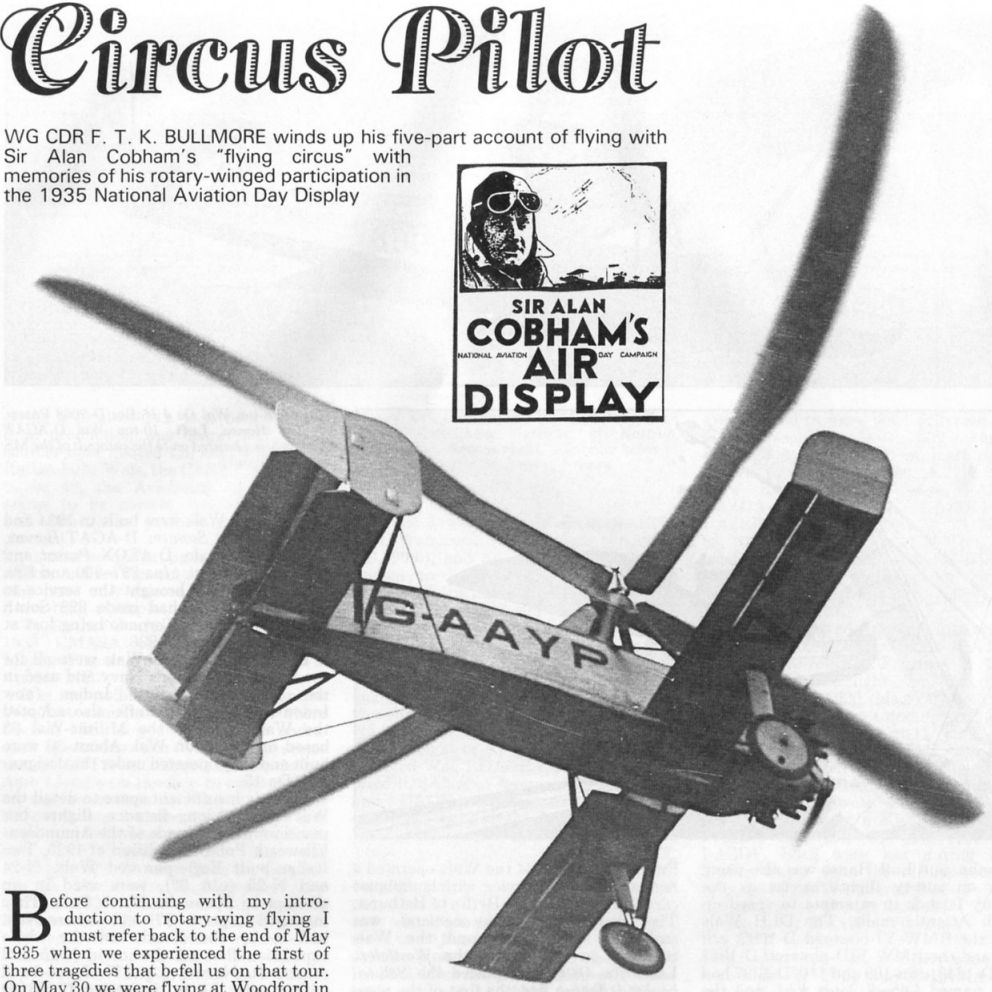
Air Circus Thrills – Saturday 20th July 1935 – Kintore Airport, Sir Alan Cobham’s Air Circus will feature high-speed Aerobatics, looping in Formation, a Paper Chase, Parachute & Gliding demonstrations and a surprise item. The Circus and the Display will commence today & continues tomorrow. Officers of 4th & 5/7th Gordon’s Regiments will be present. – The ”Press & Journal” Autogiro that formed the most interesting item the dazzling performance comprising Sir Alan Cobham’s Air Circus.
The Weather was bright so that every movement of each of the 8 Machines in operation could be seen clearly. Crowds saw the Accident in which 2 Aeroplanes belonging to Sir Alan Cobham’s Flying Circus crashed, killing the Pilot & 2 Sisters who were Passengers in one of the Planes. The Planes were flying at a considerable height when they collided.
It is quite impossible to cut out Sunday Flying altogether,” declared Mr Eskell, “for we should not be able to complete our itinerary otherwise. To close down on Sundays would also mean a loss to the Industry, and would result in unemployment among those who are engaged in the Displays. All the good we are trying to do for Flying would be lost unless we operated 7-days a week. We have no wish whatever to disturb the Sabbath, or any way interfere with those who wish to go to Church this Evening.” “It remains for Churches to Act.” Rev T Llewellyn Jones, President the Okehampton Free Church Council, preaching at the Baptist Church, said: “Either the Air Ministry is trifling with a serious situation, Sir Alan Cobham is ignoring both the Church & the Chapel-going public. The Police are not prepared to enforce the Sunday Observance Act, as the Northampton Police did quite recently, and it remains for the Church to take what action they can conjunction with sympathetic Civic Authorities the Country to save the Lord’s Day from further exploitation by mere Commercialism & Secularisation.’ For Christian people, it must become a matter of Example and earnest Prayer.“

Sir Alan Cobham was a Pioneering Long-distance Aviator & Technical Innovator who became famous for his exploits in the Interwar years by making Aviation accessible and popular throughout the World. He learnt to Fly while in the Royal Flying Corps during the WW1 and later went on to set many long-distance Aviation Records. Alan Cobham started to Fly long distance journeys for the de Havilland Hire Service. Based at Stag Lane Aerodrome, Edgware, London, Cobham flew Passengers to destinations in Great Britain, Europe & North Africa. In August 1921, a wealthy American, Lucian Sharpe, Chartered an Aeroplane to Fly him around Europe with Alan Cobham as his Pilot. He began his India Flight & Piloted Sir Sefton Brancker, Director of Civil Aviation and on behalf of Imperial Airways on his 17,000-mile Aerial Survey to India and back from Stag Lane Aerodrome on 20th November 1924. The outward journey spanned 79 days and over 8,500 miles when he reached Rangoon, Burma on 6th February 1925. On 8th February 1925, he left for England reaching Croydon Aerodrome in South London 38 days later on 17th March 1925.
The approximate programme, subject to changes as required, of course, is as follows:
Flypast – the loud-speaking Equipment assisting by explaining the Aircraft;
Formation Flight led by the Airspeed “Ferry” with Passengers on board;
Aerobatics – a “Tiger Moth” being used for this purpose which has been fitted for inverted flying;
Crazy Flying; A Glider pilot Died at one show.
Dancing in the Air – the Pilot, in this case, will endeavour to Fly in a “syncopated” fashion to music broadcast from the Radio Van, his Comper “Swift” being fitted with receiving apparatus;
Towed Gliding; A Glider pilot Died at one show.
An Air Race around Pylons something on the lines of dirt-track Racing;
Parachute Descent; A Parachutist also Died
Inverted Flying in the “Tiger Moth”;
Continuous Rolling in the “Martlet”;
A Surprise Item; Refuelling mid-Air?
Wireless Control – spectators will be invited to tell the Pilot of the Comper “Swift,” by means of Wireless, what manoeuvre they wish him to do;
Aerobatics (in Formation);
Race between the “Autogiro” and a Dirt-track Rider“
The ‘Loudspeaker Van’ was the centrepiece of the Show, parked just inside the Barrier Wire by the Ticket Tent. The driver of this Van was one of the hardest worked people on the Show. He looked after the Loudspeakers, constantly misbehaving Microphones, the Amplifier, the Gramophone Records and the charging of a massive array of Batteries supplying Public Address power.
All the Projects which Sir Alan Cobham has carried through in the past have been of a genuinely high value to Aviation, and whereas a good number of Flying achievements of recent years have served only as a means of fleeting publicity to their sponsors and participants, Cobham’s long-distance Flights across Continents definitely “blazed the trail” for future Airline Routes, and were thus of real importance. That he should now be devoting so much time and work to this National Aviation Day Campaign compels one to regard the effort as something of more than ordinary interest and significance. His Fleet of Aircraft will continue to operate until October, and at the conclusion, it will have visited 170 centres from Land’s End to John O’Groats and from East to West of the Country.
Experience has shown that very often these “Flying Circus” Operators preferred separate Sites they could have total control over for their highly intensive activities. They had a chaotic zig-zagging from Venue to Venue during this period. Flying Circus Venues: for example, on the 19th June, they displayed in Henley-on-Thames (Cockpole Green / Crazies Farm / Crazies Hill Farm) and on the 20th – Cambridge (Fen Ditton). On the 21st Chesham (The Vale) was scheduled and of course, Ipswich on the 22nd with Romford (Maylands) on the 23rd & Havant on the 24th.
1932~35 “We Have Done Our Job” Sir Alan Cobham’s Air Circus is to be disbanded. In the 4 years of its existence, the Aeroplanes of the Circus have carried ¾M people in Joy Skyrides and the Circus itself has visited 1,000 Towns. 3M people have entered the Display Grounds as Spectators. Sir Alan had told a Reporter that the Machines & Equipment of the Circus had been sold and the Company would be entirely disbanded by Christmas. “We have done our job, he said. The whole thing was started as a means of Propaganda to popularise Flying with the Public and to bring about the Municipal Aerodromes Schemes“.
There was an inordinately high number of Fatal Accidents at Cobhams Air Circuses – so much so that one wonders how on earth they managed to continue. Public Participants, Pilots, Gliders, Parachutists etc died at these events under the full gaze of the Public who often rushed to the scene of the accident to secure a memento of the occasion from among the scattered debris. Was there adequate insurance, warnings or sufficient safety factors introduced to protect the paying Public & would be Aviators. There were many expressions of regret over the Tragedies but what compensation was paid to the Victims of Cobham’s Aviation Crusade.
On 7th September 1935, the 3-Engine Aircraft left Blackpool-Squires Gate Airport for a local flight with 2 Passengers (a couple) and a Pilot on board. While flying over the City of Blackpool, it collided with an Avro 504N registered G-ACOD Flying on behalf of National Aviation Displays, the 2nd Aircraft was carrying 2 Passengers and a Pilot as well. After the Collision, both Aircraft fell into the ground and crashed in flames in Swainson Street, in Cedar Square, Blackpool. Both Aircraft were destroyed by impact forces & post-crash fire and the 3 occupants of Avro 504N G-ACOD were killed:
Hugh William Patrick Stewart (Pilot, aged 29) killed
Miss Lilian Barnes (Passenger, aged 33) killed
Miss Doris Barnes (Passenger, aged 30) killed
Flight Lt Leonard Turnell Carruthers and 4 Passengers unhurt in Wessex G-ADFZ.
